Scientific name Pachira aquatica Rank Species | Genus Pachira Higher classification Pachira | |
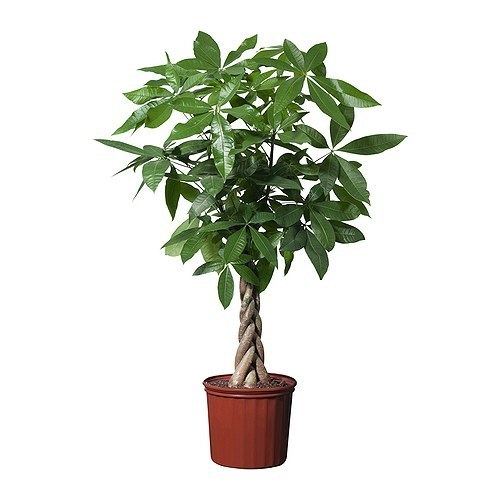 | ||
Similar Fig, Chestnut, Sapodilla, Breadfruit, Jackfruit | ||
Pachira aquatica is a tropical wetland tree of the mallow family Malvaceae, native to Central and South America where it grows in swamps. It is known by the common names Malabar chestnut, French peanut, Guiana chestnut, provision tree, saba nut, monguba (Brazil), pumpo (Guatemala) and is commercially sold under the names money tree and money plant. This tree is sometimes sold with a braided trunk and is commonly grown as a houseplant, although more commonly what is sold as a "Pachira aquatica" houseplant is in fact a similar species, P. glabra.
Contents
- Money tree bonsai pachira aquatica june 2016
- Description
- Taxonomy and naming
- Role in East Asian culture
- References

Money tree bonsai pachira aquatica june 2016
Description
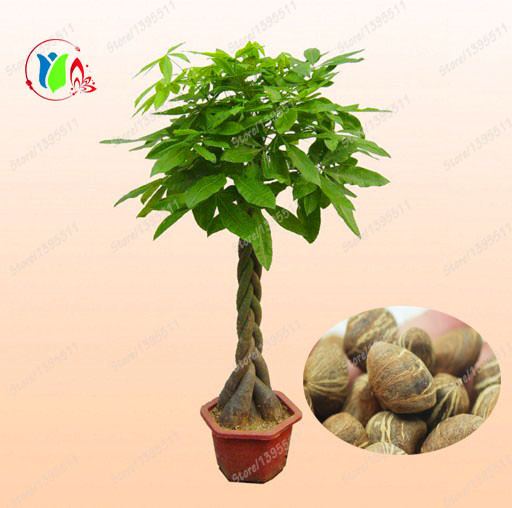
Pachira aquatica can grow up to 18 m (59.1 ft) in height in the wild. It has shiny green palmate leaves with lanceolate leaflets and smooth green bark. Its showy flowers have long, narrow petals that open like a banana peel to reveal hairlike yellowish orange stamens. The tree is cultivated for its edible nuts, which grow in a large, woody pod. The nuts are light brown, striped with white. They are said to taste like peanuts, and can be eaten raw, cooked, or ground into flour to make bread. The leaves and flowers are also edible.
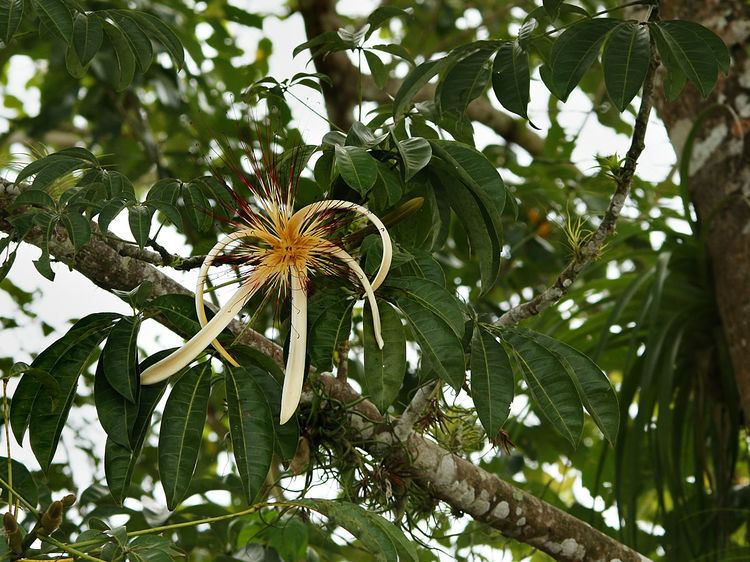
The tree grows well as a tropical ornamental in moist, frost-free areas, and can be started from seed or cutting. It is a durable plant and adapts well to different conditions. The pachira needs plenty of sunlight, though it is important it is not placed in direct sunlight gradually in summer months, as the leaves may get sunburned.

The fruit, a nut, is of a brownish colour and can measure up to 12 inches (300 mm) in length and 2.5 inches (64 mm) in diameter. Seeds grow within until such time as the nut bursts, sending the seeds forth and propagating. The nut is edible and often eaten raw or roasted, with a flavor similar to a European chestnut; it may also be ground and made as a hot drink. The fruit is not eaten.
Taxonomy and naming
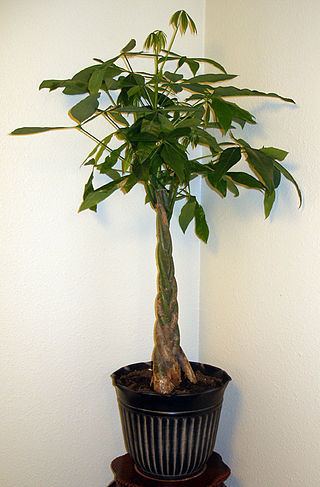
The genus name is derived from a language spoken in Guyana. The species name is Latin for "aquatic". It is classified in the subfamily Bombacoideae of the family Malvaceae. Previously it was assigned to Bombacaceae.
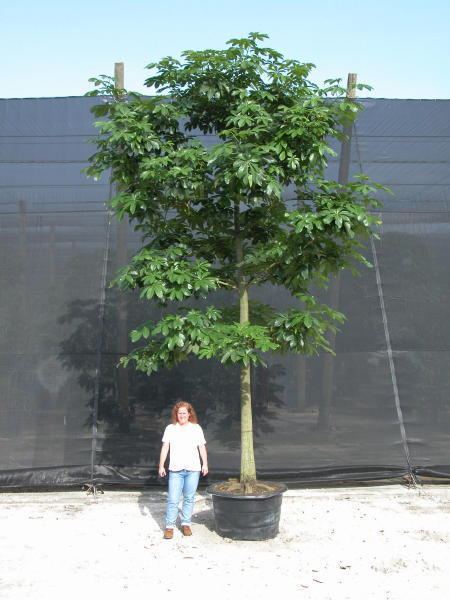
The name "money tree" seems to refer to a story of its origin, where a poor man prayed for money, found this "odd" plant, took it home as an omen, and made money selling plants grown from its seeds.
Role in East Asian culture

In East Asia, Pachira aquatica (Chinese: 馬拉巴栗; pinyin: Mǎlābā lì; literally: "Malabar chestnut") is often referred to as the "money tree" (發財樹 fācái shù). The tree had long been popular as an ornamental in Japan. In 1986, a Taiwanese truck driver first cultivated five small trees in a single flowerpot with their trunks braided. The popularity of these ornamentals took off in Japan and later much of the rest of East Asia. They are symbolically associated with good financial fortune and are typically seen in businesses, sometimes with red ribbons or other auspicious ornamentation attached. The trees play an important role in Taiwan's agricultural export economy with exports of NT$250 million (US$7 million) in 2005. However, much of what is in cultivation sold as Pachira aquatica is, in actuality, a similar species, P. glabra, which develops a thick base at a younger age and has a smaller growth habit, less showy flowers, and a 6" green seed pod rather than 12" brown seed pod.
